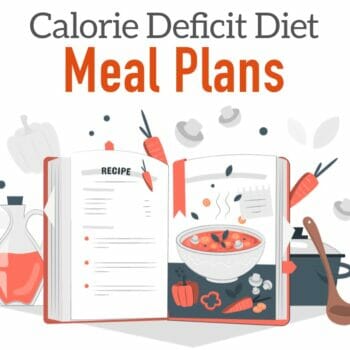How Much Meat Should I Eat?
Anytime healthy eating is discussed, one of the most controversial subjects is eating meat.
There are many views concerning its inclusion in a human’s diet, but generally, those following a typical Western diet eat too much of it.
While the protein in meat is useful for repairing and building our bodies, we don’t need a large portion of meat with every meal.
How much meat should I eat?
The amount of meat that you need is dependent on what your goals are. The traditional mindset of having a large portion of meat with each meal isn’t ideal for your health or the environment.
Typical daily protein requirements:
- Weight loss = .65 grams per pound of body weight.
- Maintain muscle = .65 grams per pound of body weight.
- Build muscle = 1 gram per pound of body weight.
So, a person weighing 150 pounds would need 97.5 grams of protein daily.
How many grams of meat does this equate to?
| Meat Type | Portion | Protein (g) | Amount for 97g Protein |
|---|---|---|---|
| Chicken Breast | 3.5 ounces (100 grams) | 31 | 3.13 portions |
| Beef Steak | 3.5 ounces (100 grams) | 25 | 3.88 portions |
| Pork Chop | 3.5 ounces (100 grams) | 31 | 3.13 portions |
| Lamb Chop | 3.5 ounces (100 grams) | 29 | 3.34 portions |
| Turkey | 3.5 ounces (100 grams) | 29 | 3.34 portions |
| Salmon | 3.5 ounces (100 grams) | 25 | 3.88 portions |
| Tuna | 3.5 ounces (100 grams) | 30 | 3.23 portions |
Need help? Use our macro calculator to determine your optimum protein amounts.
Note: these recommendations don’t imply that all protein has to come from animal sources.
Protein bioavailability
The chart below shows the bioavailability of different protein sources. The higher the number, the better your body can utilize the protein.
| Protein source | Bioavailability index |
|---|---|
| Whey Protein Isolate Blends | 100-159 |
| Whey Concentrate | 104 |
| Whole Egg | 100 |
| Cow’s Milk | 91 |
| Egg White | 88 |
| Fish | 83 |
| Beef | 80 |
| Chicken | 79 |
| Casein | 77 |
| Rice | 74 |
| Soy | 59 |
| Wheat | 54 |
| Beans | 49 |
| Peanuts | 43 |
Not all protein sources are created equally, but generally, all the most popular meats we tend to eat are about the same.
How to choose the best meat and protein sources
- Choose poultry, fish, and eggs as your primary source of animal protein.
Eggs have the highest protein bioavailability; poultry and fish are much leaner than beef or pork. - Limit rich meats like beef and pork to once or twice per week.
Studies have linked the high consumption of red meat to colon cancer.1 - Skip the breakfast meat.
Add another egg instead since it is a better source of protein. However, please don’t deprive yourself of the joy of bacon, have it once per week. - Avoid processed meats
Lunch meats usually have preservatives and are high in sodium. - Marinate meat to make lean cuts of meat more tender.
A good marinade has to have an acid like lemon juice or vinegar to work. - Choose hormone-free, free-range or grass-fed meat when possible.
It’s more expensive, but more competition is helping to lower prices. - Buy meat from local farmers or butchers.
Most meat in chain supermarkets comes from a few national meat packing plants. By buying locally, you know where your meat is coming from and how long it’s been from slaughter to your table. - Avoid cooking meat with breading or frying in oil.
This adds a lot of extra calories. Grilling, roasting, baking, or broiling are great healthy cooking methods. - Aim for at least one meatless meal per day
Get your protein through nuts, seeds, grains, and vegetables instead. - When eating out, choose fish or chicken entrée options
Apart from the fried varieties, they usually have less fat and calories but just as much protein. - Eat your portion of meat with more veggies.
Skip the high-calorie, starchy sides that usually accompany the meat.
There are many ways to eat healthy, which can be different for different people. Vegetarians can be as healthy as meat eaters and vice versa.
Cooking steak? I show you how to get the perfect cook.
View article sourcesSources
- Parr, C. L., Hjartåker, A., Lund, E., & Veierød, M. B. (2013). Meat intake, cooking methods and risk of proximal colon, distal colon and rectal cancer: The Norwegian Women and Cancer (NOWAC) cohort study. International Journal of Cancer, 133(5), 1153-1163. Study Link


 How to create macro meal plans (quickly) using ChatGPT
How to create macro meal plans (quickly) using ChatGPT Calorie Deficit Meal Planner
Calorie Deficit Meal Planner Dark Chocolate: The Best and Worst Brands
Dark Chocolate: The Best and Worst Brands Macro Friendly Family Dinners
Macro Friendly Family Dinners The Best Plant-Based Burgers: Brands to Choose and Avoid
The Best Plant-Based Burgers: Brands to Choose and Avoid